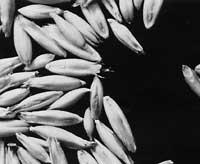Agricultural biodiversity decreases
1997/03/01 Elhuyar Zientzia Iturria: Elhuyar aldizkaria
Agriculture reduces plant biodiversity for food, according to the UN FAO. Worldwide, 30,000 species of food plants are cultivated, each with a large genetic variety (the rice species Oryza sativa, for example, has 100,000 varieties). Millions of varieties have been grown, but according to FAO, 100 of them have already disappeared and another million will be lost if no protective measures are taken.

Genetic manipulations are produced to make cultivated species more fertile and resistant to viruses, but at the same time thousands of uninteresting varieties are marginalized. According to the American Academy of Sciences in 1991, more than nine varieties of the same average species are not used in our fields of cultivation.
Greenpace also fears “genetic contamination” because transgenic plants can transmit a strange gene to the wild. The introduction of “improved” plants in the market would mean the disappearance of varieties grown in different places. If a virus appeared to prevent the resistance of the genetically modified plant, ecological and economic deterioration would occur.
To avoid this disaster “seed banks” have been created around the world. At present six million frozen species are preserved in these banks up to -20 °C. After freezing they fear and sow every ten years to maintain fertility. This system is long and expensive. Therefore, another system would be the creation of “bioprotected farmhouses”. Traditional varieties would be worked, although their yield is lower than that of genetically modified plants.
The FAO financial department estimates that a budget of between $1 billion and $3 billion should be used for the conservation programme.

Gai honi buruzko eduki gehiago
Elhuyarrek garatutako teknologia





